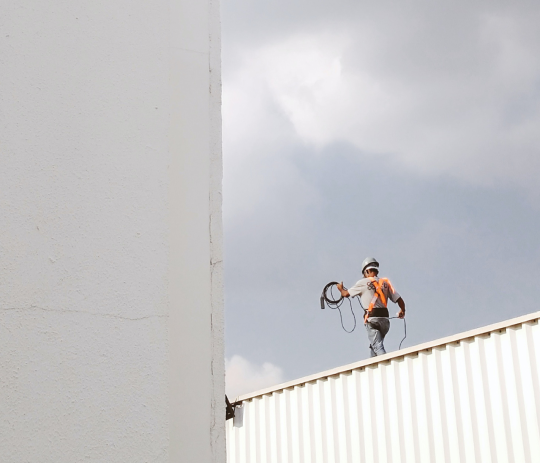
Effectively managing supply chain safety and compliance is critical for today’s organisations to meet regulatory requirements, ensure risk items aren’t missed and to avoid workplace accidents or injuries.
Crucially, ensuring that business systems and processes are set up optimally will ensure that there are no gaps in your contractor management strategy, and that your team isn’t wasting time or resources unnecessarily. This is especially important for organisations managing contractors across several projects or sites.
Following are common mistakes that can be made when managing contractors, and how resources such as a contractor management system can be used in order to minimise mistakes (and therefore hazards and risks) to improve safety across your operations.
Ensuring a contractor is competent and has the correct insurance, training, permits and licences before engagement on a project is a vital step when selecting contractors. Engaging a contractor that is not competent can present critical safety, legal and financial risks to your organisation. Fortunately, there are contractor management systems available in order to make this process a lot less stressful and cumbersome than it can be.
Comply Flow allows organisations to set their requirements for contractors and suppliers and then invite them to upload their documentation to meet each requirement. This process allows HSE managers to select from a list of prequalified contractors who have provided evidence of the required documentation (e.g. Public liability insurance, relevant policies and procedures) and are already approved. Having a pre qualification process managed in a compliance management tool means that all of this information can be reviewed before engaging contractors complete the project or work order at hand.
When engaging a contractor it is easy to request all the necessary and correct documentation, however, ensuring the documentation is being adhered to is another story. Once a project commences it is hard to check contractors are following procedures as contained in their SWMS (safe work method statements) and management systems - especially if you are not physically there. This is nevertheless a vital part of the prevention of workplace injury on projects.
A simple task such as site inspection can be done to check and physically see if a contractor is following procedures correctly. At times where your safety personnel cannot be there, it is vital to have established measures to ensure the safety of all involved in a project. Daily start-up checks done by the site manager, fatigue management and drug and alcohol testing management are all resources that can take place to check the safety and wellbeing of all on a project.
Contractor management systems can help with these by providing digital tools to manage timesheets, site inspection checklists and drug and alcohol testing.
Inducting and training contractors and their onsite workers for projects is an essential part of engaging a contractor. In some organisations, teams can easily lose track of who has been inducted and what has been taught to personnel. Getting organised here can be challenging without a digital solution. Fortunately, many contractor management systems give organisations the option to set up online training, mobile app inductions and scheduling within one platform. This allows you to keep track of who has completed the training and inductions, and ensures your team is across of who onsite has completed all training and inductions.
Comply Flow’s mobile app Live Access allows any supervisor to spot-check workers who have signed in at a site via the mobile app and review the completion status of any training or induction requirements instantly. This is a powerful tool for ensuring safety training completion and compliance among your external workforce.
Communication and consultation are key to the smooth running of a project. When something changes with regards to the project or a person’s safety these things must be communicated to ensure all personnel are notified and following the correct processes. Setting up regular communication and consultation can reduce hazards and risk to all personnel onsite.
Toolbox talks and pre-start meetings are good examples of effective communication and consultation. Ensure you are recording attendance as a way to track who has all the necessary information and who still needs to be informed.
When you have a contractor on a project you need to ensure that all plant and equipment is maintained and kept in a good condition. Ensuring all risk assessments are completed, calibration is certified, operators are competent and servicing is up to date. If these are not completed the plant or equipment could fail causing injury or hazards to the workplace.
Using a contractor management system can minimise risk and ensure all requirements of plant and equipment are met. It can do this by uploading the relevant documentation and reviewing it when necessary. Some systems, such as Comply Flow, integrate with QR stickers that allow your team to instantly spot-check items of plant using a mobile inspection app and review their real-time compliance status, documents and other requirements both on site and online.
When contractors (or visitors) are onsite and have engaged with subcontractors it can be hard to keep track of who is onsite and whether they are competent or have required permits for the task they are undertaking. It is crucial to keep track of who is onsite and if they have met the compliance requirements to be working there.
Software to manage contractor management like Comply Flow can keep track of this for you by allowing you to set up access restrictions and specific compliance requirements by geofencing specific sites, projects or zones. You can also set up access points where a worker will need to sign in in order to access the site, either using hardware or a mobile tool depending on the work environment -ensuring compliant-only access and help your team keep track of who is onsite at any time.
To learn more about our products and how we can help streamline your compliance management approach, schedule a meeting with our team!
